Coin in the shape of a shovel
During the two periods of the Eastern Zhou Dynasty (770–256 B.C.), the Spring and Autumn Period (771–476 B.C.) and (in particular) the Warring States Period (475–221 B.C.), bronze money appeared in many forms, mostly miniature replicas of everyday objects such as shovels, knives, bells and other musical instruments, keys, clothes, and other types of weapons and tools. Each state of the fragmented Zhou dynasty territory minted its own money, which is why these coins are often referred to as “state coins” or guobu 國布 in Chinese numismatics. The most common types of coins, and the longest in circulation, were shovel-shaped coins (bubi 布幣 or buqian 布錢) and knife-shaped coins (daobi 刀幣 or daoqian 刀錢).
The coin in the photo is an example of a coin in the shape of a shovel with a flat handle. Flat-handled shovels are slightly later than their predecessors with a hollow handle and date from the Warring ... more
During the two periods of the Eastern Zhou Dynasty (770–256 B.C.), the Spring and Autumn Period (771–476 B.C.) and (in particular) the Warring States Period (475–221 B.C.), bronze money appeared in many forms, mostly miniature replicas of everyday objects such as shovels, knives, bells and other musical instruments, keys, clothes, and other types of weapons and tools. Each state of the fragmented Zhou dynasty territory minted its own money, which is why these coins are often referred to as “state coins” or guobu 國布 in Chinese numismatics. The most common types of coins, and the longest in circulation, were shovel-shaped coins (bubi 布幣 or buqian 布錢) and knife-shaped coins (daobi 刀幣 or daoqian 刀錢).
The coin in the photo is an example of a coin in the shape of a shovel with a flat handle. Flat-handled shovels are slightly later than their predecessors with a hollow handle and date from the Warring States Period, when they appeared in various forms in individual countries. One of the earliest types of these coins is the “shovel with curved legs” (hujian bu 弧肩布), from the period between 400 and 300 B.C. They are characterised by U-shaped legs and angular or rounded shoulders, as seen on the illustrated coin. Shovels of this type are usually associated with the Liang 梁 or Wei 魏 state, which flourished between 425 and 344 B.C., and the Han state. On the obverse of the coin we find an inscription in large seal script (da zhuanshu 大篆書), that reads, “half jin, Anyi” (Anyi ban jin 安邑半釿). Here, jin 釿 gives the weight or monetary unit of time, and Anyi refers to the capital of the state of Wei. (MG)
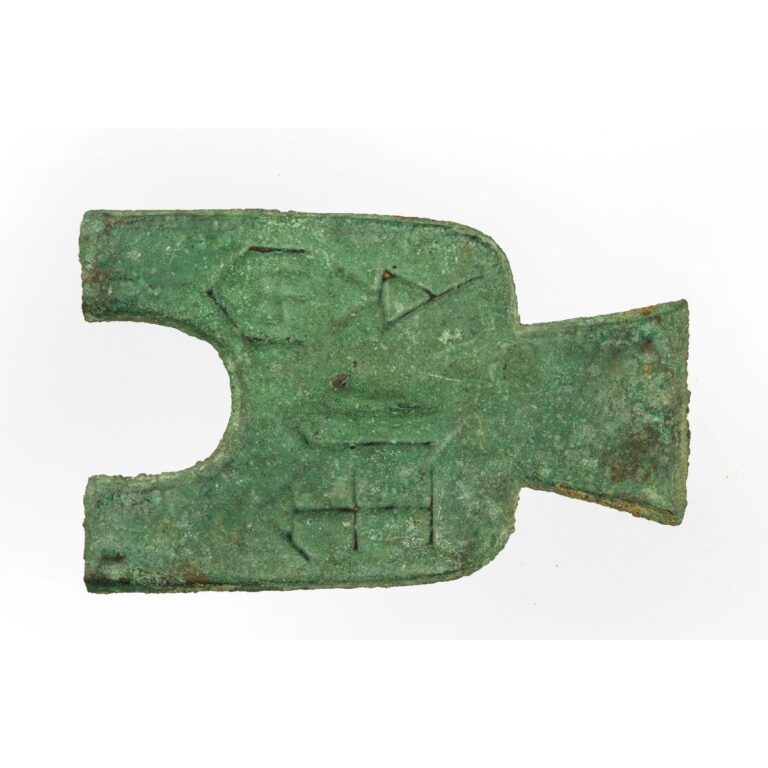
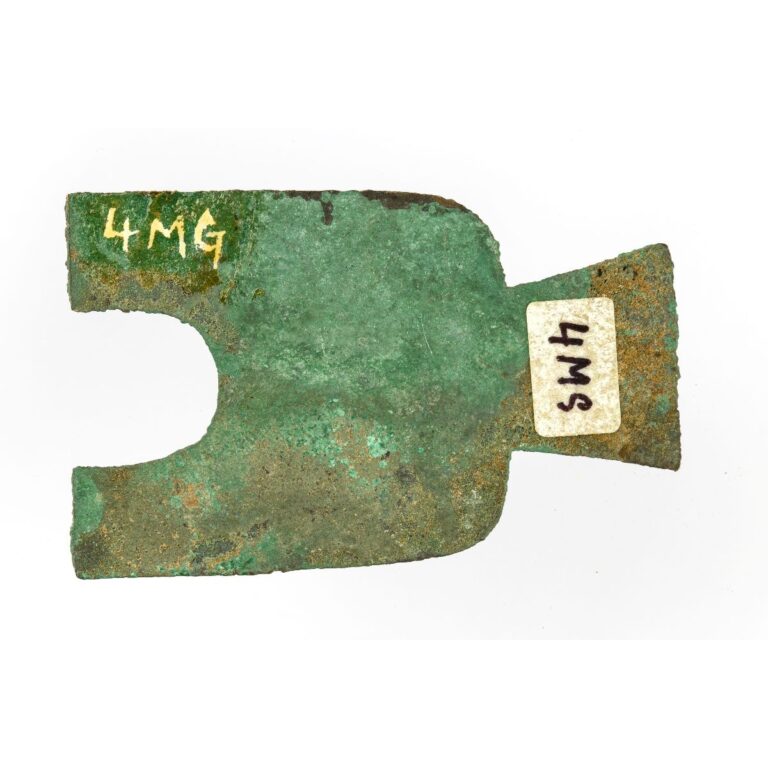
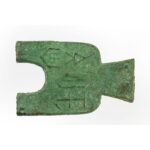
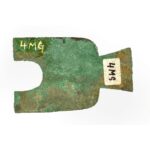

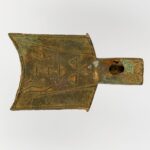








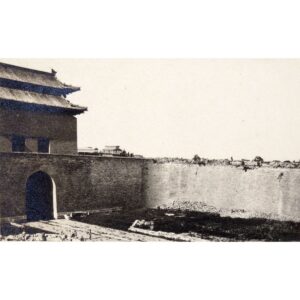
























Do you have a comment or additional information about the subject?